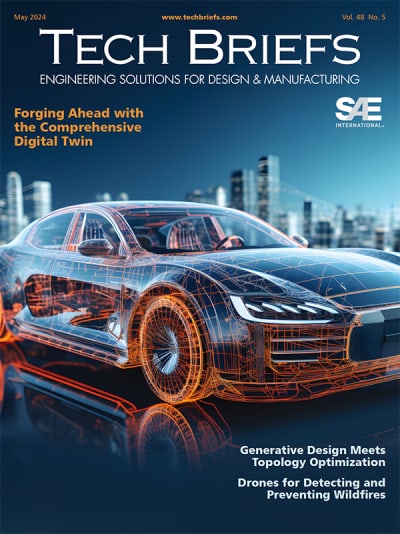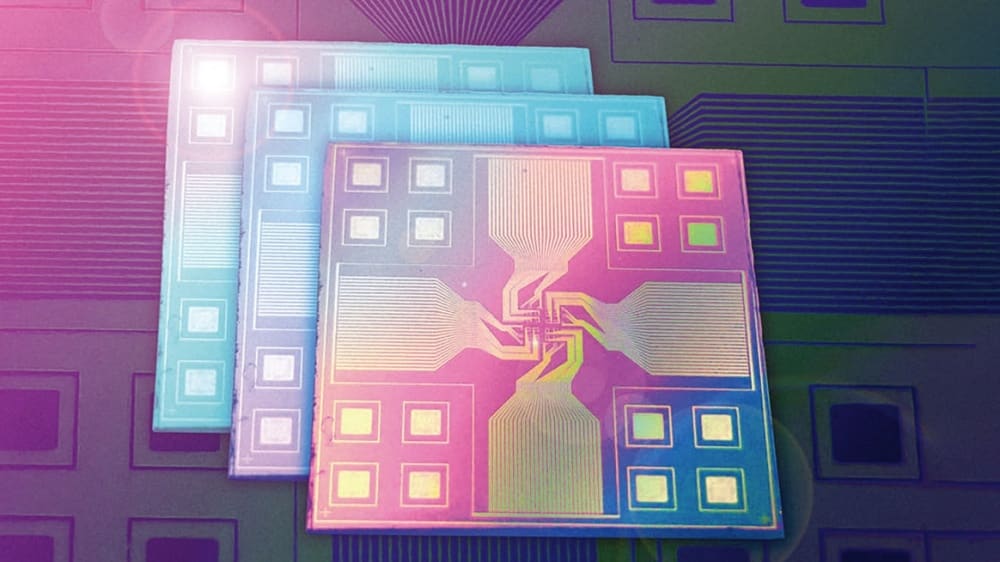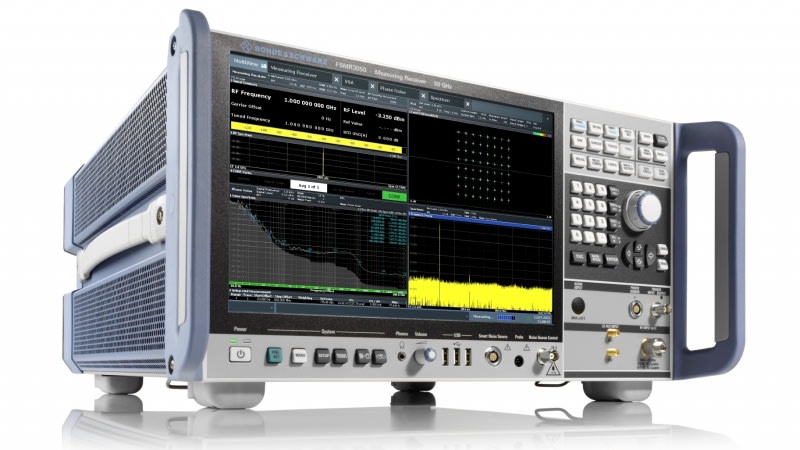
Each month, our editors choose a Product of the Month that has exceptional technical merit and practical value for our design engineering readers. Those 11 products are the nominees for the 2023 Tech Briefs Readers’ Choice Product of the Year.
You’re invited to cast your vote for the one product among the 11 listed below that you feel was the most important new product introduced to the engineering community in 2023.
The Readers’ Choice Product of the Year winners will be announced in Tech Briefs magazine and on our website at http://www.techbriefs.com/poy.
Only one vote per person will be counted. All votes must be submitted by January 20, 2024.
The 2023 nominees are:
L. S. Starrett Company

The L. S. Starrett Company, Athol, MA, has introduced a new line of full-featured Electronic Digital Indicators, an enhanced version of its 2900 series. The new Indicators, including 2900 electronic, and W2900 electronic wireless models are made in the U.S.A., feature true absolute sensor technology that minimizes the chance of data loss, glass scales, high accuracy to +/-0.00005” and IP67 protection from hostile shop environments, including coolant, chips, and dirt. The indicators are also now available in fully wireless models, a newly designed 4-inch (100 mm) range model, and all indicators feature rechargeable batteries. Starrett 2900 and W2900 Indicators offer users a choice of features from basic to advanced or selectable resolution, and all models feature data output for statistical process control.
Hexagon

The Manufacturing Intelligence division of Hexagon, Stockholm, Sweden, has introduced Elements, a new simulation software that helps engineering teams understand the behavior of systems that are becoming increasingly complex in modern products. Using the software, teams can evaluate the performance and feasibility of new design concepts to inform more efficient product development and reduce risk and cost. Elements addresses the growing importance of integrated, multidisciplinary system development and end-to-end workflows, including integration of relevant engineering disciplines, control systems, and third-party supplier systems. Systems engineers can easily learn to use its drag-and-drop environment, based on the Modelica language, to model any physics type or logic, and analyze systems by intuitively connecting blocks — regardless of whether they represent electrical, hydraulic, or mechanical components.
Nexa3D

Nexa3D, Ventura, CA, announced commercial availability of its highest throughput additive production system, the QLS 820. With a print speed of up to 8 liters per hour and up to 20 percent packing density, it is designed for high volume production of thermoplastic components. At the core of the QLS 820 is the patented Quantum Laser Sintering (QLS) print engine consisting of four CO2 lasers with a power of 100W each. It features an exchangeable build station that operators can use for continuous production during the cooldown process. It works with standard materials such as PA11 and PA12 — direct replacements for injection molding grade materials — and is also compatible with higher-temperature materials, such as PA6.
Acromag

Acromag, Wixom, MI, has released two new Ethernet Remote Input/Output (I/O) modules, the NT2510 and NT2530, as part of its Busworks® NT Series. They are designed to be a cost-effective solution for monitoring and controlling analog and discrete signals in industrial applications. Eight models have bidirectional discrete I/O, voltage or current analog inputs, and optional analog current outputs. They have dual RJ45 ports and a web server with field-selectable Modbus TCP/IP or EtherNet/IPTM communication. They also have an integrated DIN rail bus that allows up to three NTX expansion I/O modules to be connected, and a space-saving design that requires only 25 mm of DIN rail per module.
Mitsubishi Electric Automation

Mitsubishi Electric Automation, Vernon Hills, IL, has released its MELSOFT Gemini 3D Simulator Software to allow users to expedite the design and construction of manufacturing projects as they introduce new automation components to their facility. By connecting to a variety of software and factory devices, it provides visualization, simulation, and the streamlining of work processes. Gemini operates using a PC-based 3D digital space and connects directly to factory devices without having to go through an OPC server. This enables 3D data to be updated in digital spaces approximately 12 times faster than OPC environments.
Emerson

Emerson, Charlottesville, VA, is offering a highly intuitive human-machine interface (HMI). The PACSystems RXi HMI has projective capacitive touchscreen technology that allows users to interact with the visual display with 10-point multitouch capabilities like swipe, pinch, or zoom to move to the next screen or expand a chart, enabling easy operation by a wide range of personnel with varying levels of training and experience. It allows users to collaborate from anywhere, so that the operations, management, and maintenance teams can all view the same screen at the same time. It offers protection in wet applications with certifications for both high-pressure water jets and marine use with an IP66 water-resistance rating.
InnoPhase IoT, Inc.

InnoPhase IoT, Inc., San Jose, CA launched the Talaria TWO Module Ultra-low power (ULP) Wi-Fi optimized market-ready solution for cloud-connected IP video IoT devices. It’s designed to meet the increased demand for long battery life, low-power wireless video cameras, no longer limited by wires, placement, or constant battery changes. In addition to such applications as battery-operated video cameras, smart video doorbells, wearables, smart appliances, home security cameras, and in-vehicle dashboard monitoring devices, OEMs and ODMs are introducing new categories of video devices with designs that use solar technology and artificial intelligence as important parts of new solutions. Using a dual-stack power optimized software solution combined with an advanced digital polar radio design, the multiprotocol cloud-connected platform eliminates the challenges involved with yesterday’s power-hungry video processing IoT designs.
IDEC Corporation

IDEC Corporation, Sunnyvale, CA, is introducing the SA2E general-purpose photoelectric (PE) sensor family, which improves on its SA1E products. A new ASIC, common to the entire offering, delivers better response times and more capable detection.
SA2E PE sensors are offered in five major variations:
T: Through-beam, for detecting objects passing between emitter/receiver pairs.
P: Polarized retro-reflective, for detecting objects passing between the receiver and a reflector, even in difficult lighting conditions.
D: Diffused-reflective, for detecting targets by the light reflected from the target.
B: Background suppression reflective, for improved and reliable detection of a wide variety of targets by the light reflected by the target.
N: Small beam reflective, for close detection of small targets.
Bosch Rexroth

Bosch Rexroth, Lohr am Main, Germany, has expanded their BODAS ecosystem for mobile electronics with the new DI5 display range. The touchscreen, unit which is now available in three sizes can be flexibly integrated into cabins, cabs, or outdoor areas and is the ideal basis for simple and intuitive operation of mobile machines. Functions and visualizations can be designed in various development environments. With three sizes (5-inch, 7-inch, and 10.1-inch), the new display range can be used for anything from comparatively simple tasks such as displaying certain parameters to elaborately designed dashboard replicas and the so-called bird or area view.
Pickering Interfaces

Pickering Interfaces, Clacton-on-Sea, UK, has announced its new 40/42-890 family of modular, flexible PXI/PXIe microwave switches, bringing highly configurable RF switching solutions up to 110GHz to the PXI platform. This new range will support the latest and most demanding RF and communications test requirements as operating frequencies continue to evolve to ever higher levels. It is ideal for test environments requiring high-frequency microwave switching, from radar, satellite, and short-range land-based secure communications to consumer electronics and 5G infrastructure. A full range of switch types is offered in PXI/PXIe, with terminated or unterminated ports at frequencies up to 110GHz — with options available in 50Ω or 75Ω impedance.
Keysight Technologies

Keysight Technologies, Inc., Santa Rosa, CA, has introduced a new compact, four-channel vector signal generator (VSG) capable of signal generation up to 8.5 GHz with 960 MHz of modulation bandwidth per channel. The N5186A MXG is the next-generation high-performance VSG in Keysight's X-Series signal generator portfolio, offering the multiple, individually complex signals needed for dense wideband multichannel applications. Evolving technologies in wireless communications and radar applications demand higher frequency coverage using complex modulation schemes like MIMO, beamforming, and multiplexing to maximize data throughput. Testing these applications requires signal generation instruments that maintain excellent modulation quality when working with greater bandwidths.
Only one vote per person will be counted. All votes must be submitted by January 20, 2024.






















